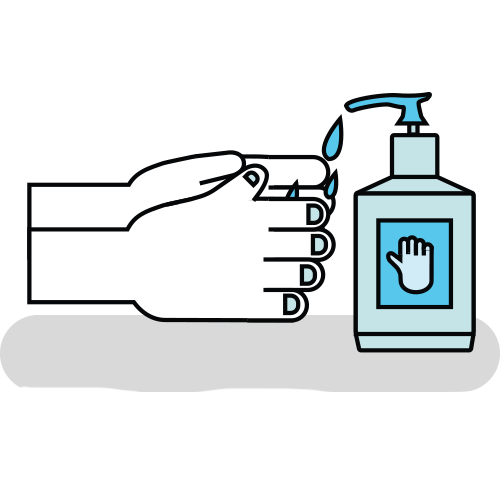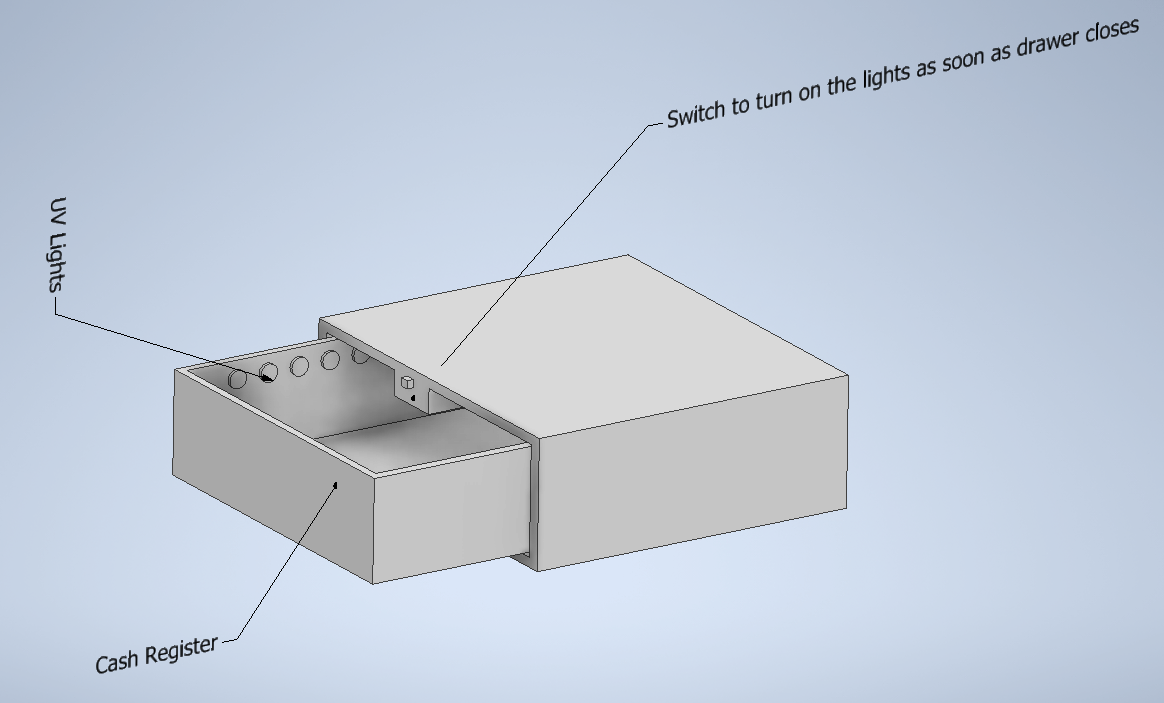Motivation
Due to Covid-19 Pandemic the nation was under lockdown but now that the unlocking has begun various types of precautions are still required to prevent the spread of the virus. People need to visit shops to buy essential items. We aim to make the process safe for both customers and the staff at the supermarkets and other big shops.
User research
Nowadays, the world has become one big digital market. Digitization has also enabled us to pay online using many different platforms like -UPI and e-wallets. However, a considerable part of the population still prefers Cash transactions or is unaware of digital modes of payment. Hand to hand transactions are still prominent mostly in shops which may result in the transmission of the virus. Our approach is simple - to make cash transactions safe concerning the transfer of this disease. An automatic cash sterilizer is a simple yet effective and affordable device. It can be provided as an add-on to your current cash register or a simple drawer. The primary mechanism of this will be to switch on the UV Light sensor as soon as the drawer closes.
Project Ideas
1. The primary aim is to automate the entrance door. A counter will be installed outside the entrance door containing sanitizer bottles. The user will have to sanitize his hands before entering the shop. When the user will take out sanitizer from the bottle the door will open automatically allowing the user to enter the shop.


2. Automatic cash register sterilization: The other idea is to build an automatic cash sterilizer for the cash register. Sterilize currency so that it reduces its possibility as a transmission/retransmission vector. Limit employee's exposure to UV-C as this process occurs. Automate the process of currency disinfection by building it into the existing infrastructure in as low cost a manner as possible. The Register will contain three identical sections. In all three sections, Ultraviolet rays emitters will be installed to sterilize the money. At any instance, one of the three sections will be closed and will be under the sterilization process, one to keep the money taken from customers and will be next in line for sterilization. The third will contain the cash to give back the change to the customer.

3. Maintaining Social Distancing: The third idea is to avoid more than three customers in a particular section/alley of the shop. 4 IR sensors two at each end of the alley to count the number of people present inside it at a given time. If the number of customers exceeds the particular value, an alarm will indicate the user to get outside the alley.

Prototyping & Testing
1. For the very first idea, we plan to use an ultrasonic sensor and a servo motor to create a simple device which will automatically dispense sanitizer. We can track exactly how many times we have to open the door, which will ensure the necessary sanitization of the customers entering the store.
In case if the store does not have an automatic door, an IR sensor can be used to track if someone is entering the store. If the sanitizer is not used just before someone is detected entering the store, a red light or a buzzer will indicate it to the shopkeeper and the customer.
Feasibility: The installation of this mechanism is quite simple and could be done very easily
Desirability: The desirability of the solution is high as people forget to sanitize their hands and it would work as a reminder to them to sanitize. Also, it would prevent the requirement of an extra staff member to ensure sanitization which is done at most of the stores.
Viability: The expense of the solution is certainly low as most of the doors at these stores are automatic and it would require very little money to upgrade.

2. The other idea will be implemented using a UV LED and LDR trigger mechanism in all three sections. The circuit will trigger the UV-C lights on after the cash register is closed by waiting for the light-dependent resistor to signify that the register is closed and has been closed for more than several seconds. Then the Nano/555 timer will trigger a MOSFET/optoisolated relay, which then completes the circuit to deliver power to the UV-C LEDs.
Feasibility: The solution requires re-designing of the entire cash registers and would also involve UV sensors that are required to install properly to ensure maximum sterilization.
Desirability:The solution is desired as the risk of contact is high in cash transfer and if virus is spread can also result in a decrease in manpower which a store would not want to have.
Viability: The expense is not very high as it is not temporary and can be used in the future in case of any other crisis. It also depends on the number of billing counters and cash registers given store has.

3. In this idea, we will install 4 IR sensors in every alley in the shop(2 sensors on each end) and a counter circuit using flip-flops. With the help of the interaction of a person with the IR sensors, it will detect whether the person is going in or out of the alley. If the maximum number in a particular alley is achieved, an alarm or led will indicate the next person to not enter into the alley.
Feasibility: For controlling the spread the solution is very desirable. The solution is feasible and does not require much effort. It can be easily done by someone with basic knowledge of these sensors.
Desirability:This solution requires the customers to wait which may result in going to other stores which is not good from the point of the owner.
Viability:The implementation would be very costly as it would require to use 4 sensors in each alley. The alternative can be to implement this solution only in the alleys that are supposed to be crowded and alleys that are not visited very often can be avoided.
This assignment is submitted by Kunal Choudhary 2017CE10117 and Shubham Kumar 2017EE10494.
